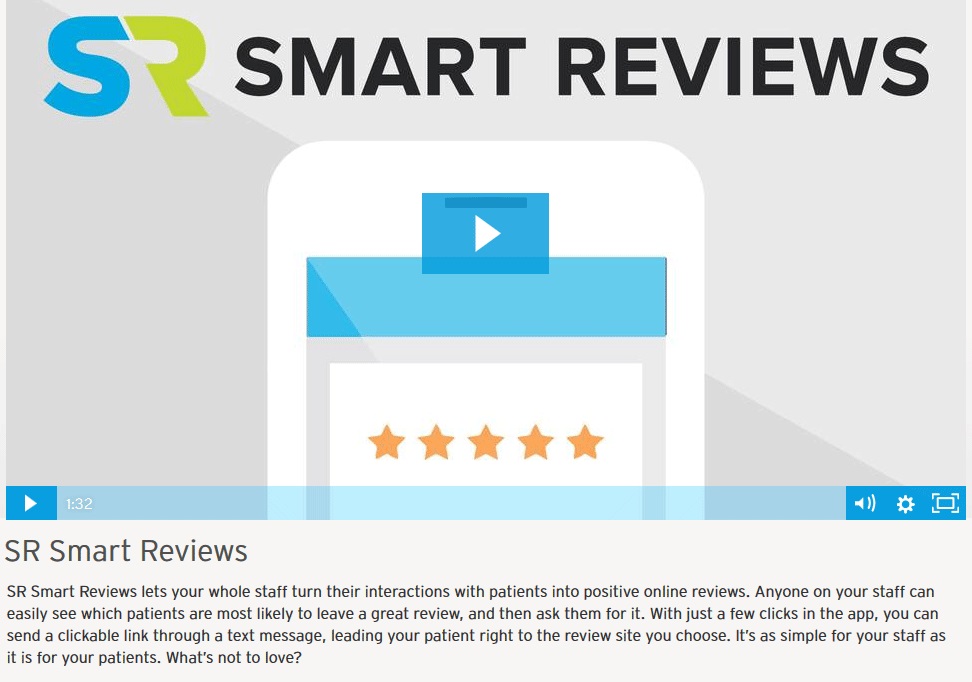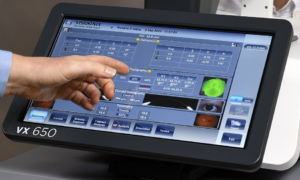Sponsored Content

By Ken Krivacic, OD, MBA
July 19, 2017
As with any human interaction, patients often don’t tell you and your staff the truth to your face. They may say they’re pleased when they’re not. For that reason, a patient satisfaction survey can give you the insight you need to improve your service, eyewear capture rate and the number of returning patients.
An automated patient communication system, such as the one we use from Solutionreach, can make surveying your patients easy and effective.
Our practice has been using patient satisfaction reviews for over 15 years. Our main goal in using them is to get feedback from patients about what they liked, and didn’t like, about their experience in our office. Armed with that information, we aim to replicate our patients’ most positive experiences, so other patients can experience the same. Conversely, we want to know what went wrong, and take steps to ensure those experiences are eliminated or reduced.

Click HERE or the image above to learn how Solutionreach can make surveying your patients easier and more effective.
SELECT
Select Tool to Implement Surveys
Over the years the process we have used to administer the patient satisfaction reviews has changed. We currently use a template offered by Solutionreach, a company that provides office-to-patient communication in several areas such as appointment reminders and recalls. Part of their package includes the ability to send out patient satisfaction surveys. This process is all performed electronically, and can be accessed whenever we want to review our surveys. We are also able to modify the reviews when we see the need. The modifications can be done from our office.
How Costly?
Once the initial setup is performed, the time spent sending out surveys is minimal. The software syncs with our practice management software and will send surveys to those patients who have had an eye exam in the past month. That process itself takes less than five minutes.
There was time spent trying to come up with the questions we wanted to ask and the format of the survey itself. I would estimate it took several hours to decide on the final product.
The initial cost was minimal, as the ability to create and manage surveys is part of the Solutionreach product. The entire Solutionreach product costs us about $200 a month. This may sound steep to some, but what is the cost of one lost patient who will not return to your practice because of a bad experience?
FORMULATE
Formulate the Questions
Click HERE for a complimentary PDF of the questionnaire we use. As you’ll see, we use a “very satisfied,” “satisfied” and “dissatisfied” scale for some questions such as, “upon arrival to your appointment, were you greeted promptly and in a friendly manner?”
For other questions, such as whether the patient would refer friends and family, we might offer “yes,” “no” and “I’m not sure” choices. We also might ask whether we have met the patient’s expectations. For instance, we may ask, “based on the service and products you received, how do you rate our fees?” offering patients response choices ranging from, “much lower than expected” to “much higher than expected.”
Anticipate a Low Response Rate
A few years ago, we conducted a survey of our surveys (wow that was fun!) and found that for the first six months of 2013 we sent out 1,650 surveys, and 239 were returned. This amounts to a 14.5 percent rate of return. This may sound low, but surveys for any type of business are only returned 10 percent of the time.
Offer Incentives to Complete Surveys?
We do not offer any incentive for filling out a survey. We have debated this point within our office several times. Our current line of thinking is that we do not want to influence the answers a patient may give by providing an incentive.
IMPLEMENT
Implement Practice Improvements Based on Feedback
One area where we made a change was in office hours. Through our surveys we learned that there were a fair amount of patients who were interested in Saturday hours. We had always prided ourselves on not being open Saturdays, but due to the feedback from our patients, we hired another associate doctor, and part of her scheduling was to work Saturdays.
Patient feedback also convinced us to change the content shown on our patient waiting area TV. Several patients complained about having to watch certain news channels they considered one-sided. That thought never crossed my mind (I assumed all news was fair and unbiased). More than one survey mentioned this, so we have since changed the channel to something much lighter like a food channel or a home improvement channel.
 Ken Krivacic OD, MBA, is the owner of Las Colinas Vision Center in Irving Texas. To contact him: kkrivacic@aol.com.
Ken Krivacic OD, MBA, is the owner of Las Colinas Vision Center in Irving Texas. To contact him: kkrivacic@aol.com.



























